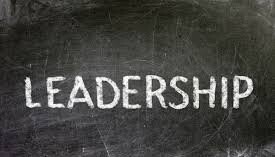Ever had those moments at work, or anywhere for that matter, where it seems like everything you engage with is a drain on your energy. Where working on an activity can feel like you’ve been at it for hours only to realize five minutes has gone by since you last looked at the clock.
Conversely, ever had days where your productivity was high and the day just flew by, and you could keep working for another hour or so.
There is a reason to this madness……..let me explain.
As part of my training to become a certified strengths coach, I was introduced to SEE [Strengths Effectiveness & Engagement] Assessment.
While there are many layers to the actual work involved in assessing and coaching SEE results, I will only focus on the balance between energy and performance.
Engaging with the Model
Like one does when skydiving – let’s jump right in.
To help contextualize what you’re looking at here, focus your attention on the inner quadrants of Affinity, Strength, Weakness, and Competence, and notice to its far left and just below it are Energy and Performance.
Source: Strengths Strategy
Before you go “huh?” let me explain a bit more.
Think of Affinity as an activity / task / project that excites you, and at times, you may not have all the requisite skills to perform to standard. Regardless, you are eager to try it out.
Competence means you have the skills, and because of that, might not be excited by the activity / task / project, so again your performance could be negatively impacted.
Strengths and Weaknesses are what they are – your actual strengths and weaknesses. However, what goes into those categories with be different for each of us.
Applying the Model
To take the application of those quadrants further and understand how it applies to each of us, our energy and performance, we must first look beneath the surface to see what is going on.
Source: Strengths Strategy
Hint: The areas are color-coded for a reason – to reflect its effectiveness or lack thereof.
When we engage in anything, we are working from one of the following three areas: Depletion Zone (Red), Strengths Development Zone (Yellow), and A+ Zone (Green).
Identifying Personal Solutions
What’s important to remember when trying to apply the zones to yourself is what activities / tasks / projects provoke you toward one zone over the other, and where might you be vulnerable in spite of your best efforts.
The answers could require a long, hard look in the mirror to uncover personal revelations.
And manageable short-term solutions also exist where you can creatively sandwich (term borrowed from my strengths trainer DeAnna Murphy) Depletion Zone activities in between A+ Plus Zone activities to manage against burnout.
Though, the key to unlocking this strategy also is – how well do you know your strengths and how you’re putting them to use?
For more on:
– strengths awareness and application, click here
– strength-based coaching certification training, click here
– Strengths 3.0 [forthcoming book ] A New Approach to Empowering Performance, Energy, and Relationships, click here






